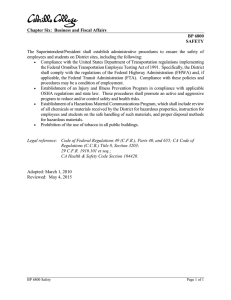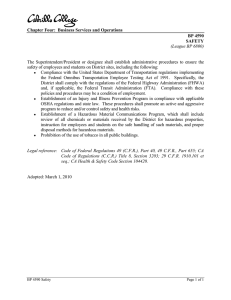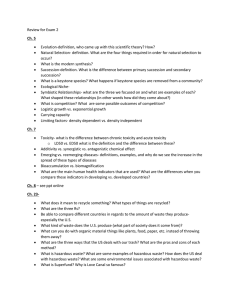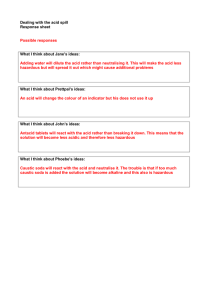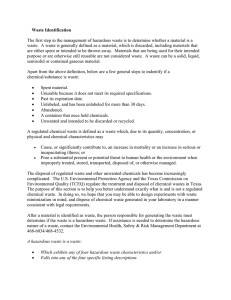Academic Operations Department Checklist
advertisement
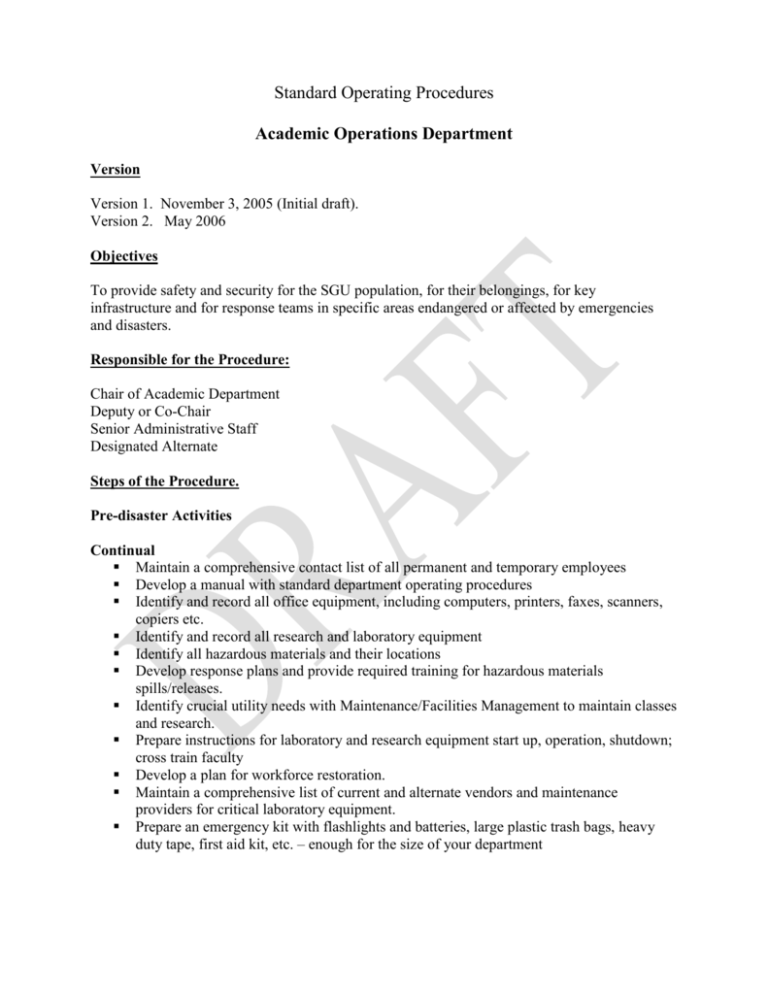
Standard Operating Procedures Academic Operations Department Version Version 1. November 3, 2005 (Initial draft). Version 2. May 2006 Objectives To provide safety and security for the SGU population, for their belongings, for key infrastructure and for response teams in specific areas endangered or affected by emergencies and disasters. Responsible for the Procedure: Chair of Academic Department Deputy or Co-Chair Senior Administrative Staff Designated Alternate Steps of the Procedure. Pre-disaster Activities Continual Maintain a comprehensive contact list of all permanent and temporary employees Develop a manual with standard department operating procedures Identify and record all office equipment, including computers, printers, faxes, scanners, copiers etc. Identify and record all research and laboratory equipment Identify all hazardous materials and their locations Develop response plans and provide required training for hazardous materials spills/releases. Identify crucial utility needs with Maintenance/Facilities Management to maintain classes and research. Prepare instructions for laboratory and research equipment start up, operation, shutdown; cross train faculty Develop a plan for workforce restoration. Maintain a comprehensive list of current and alternate vendors and maintenance providers for critical laboratory equipment. Prepare an emergency kit with flashlights and batteries, large plastic trash bags, heavy duty tape, first aid kit, etc. – enough for the size of your department Watch (to the extent that such a period exists) Everyone secures their work areas and equipment. Check and secure all general department equipment Check critical research equipment and hazardous materials. Check and secure all hazardous materials (including wastes). Assist with appropriate response plans for student safety. Release non critical faculty and staff for personal preparation. Warning (to the extent that adequate time exists) Perform any activities that were not performed during the Watch period. Reserve time for last minute emergencies. Implement appropriate relocation, evacuation and safety plans. Post-disaster Activities Immediate Complete appropriate steps from Watch & Warning that were not implemented before disaster impact. If applicable, shut down research equipment. Everyone is to make contact as soon as possible. Make a preliminary damage assessment. Intermediate Make critical (if only temporary) repairs. Resume classes and research as soon as possible. Make a comprehensive damage assessment. Initiate replacement of destroyed or disabled equipment. Repair salvageable equipment. Long Term Review the Department’s Business Continuation Plan.



